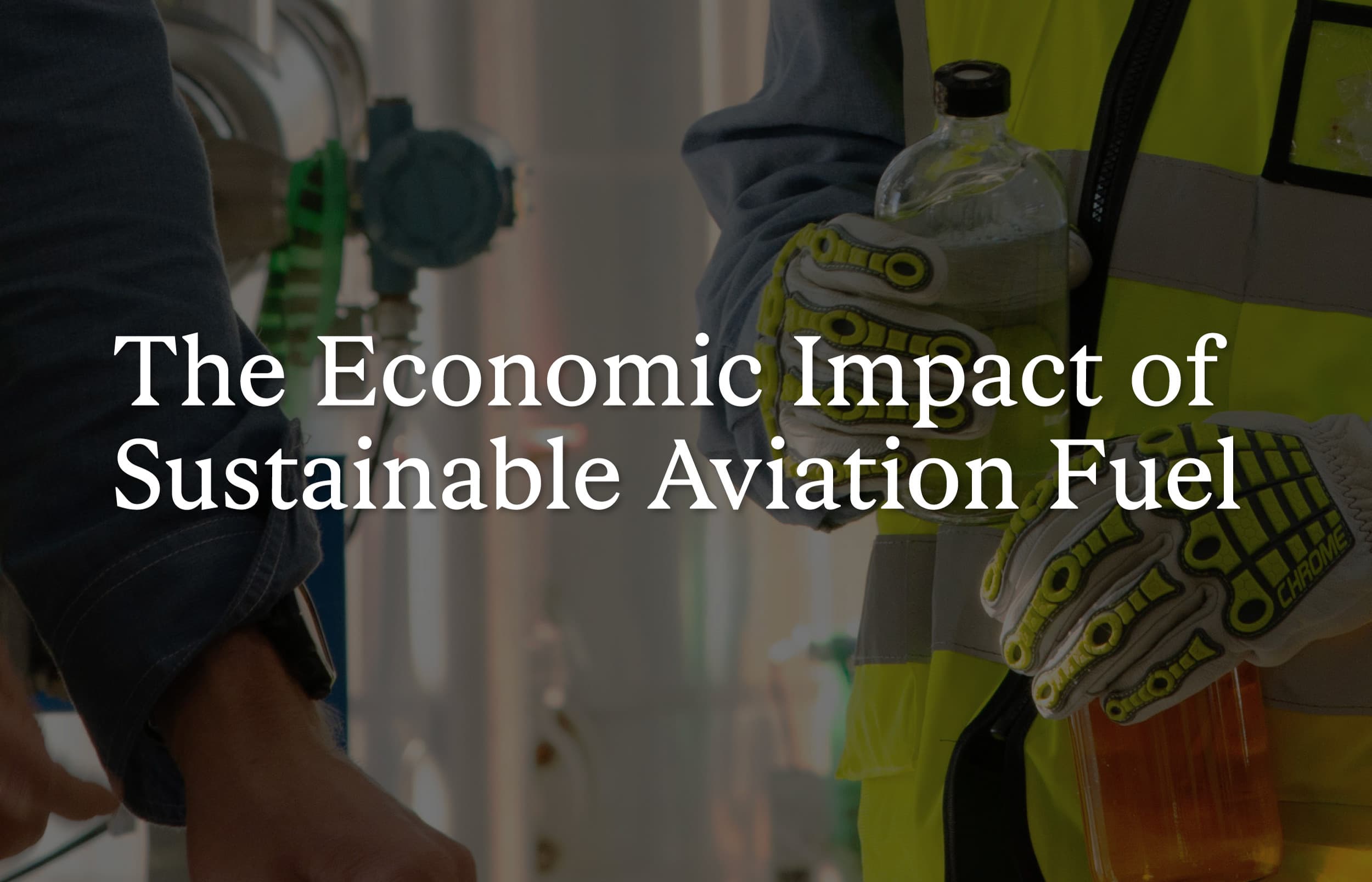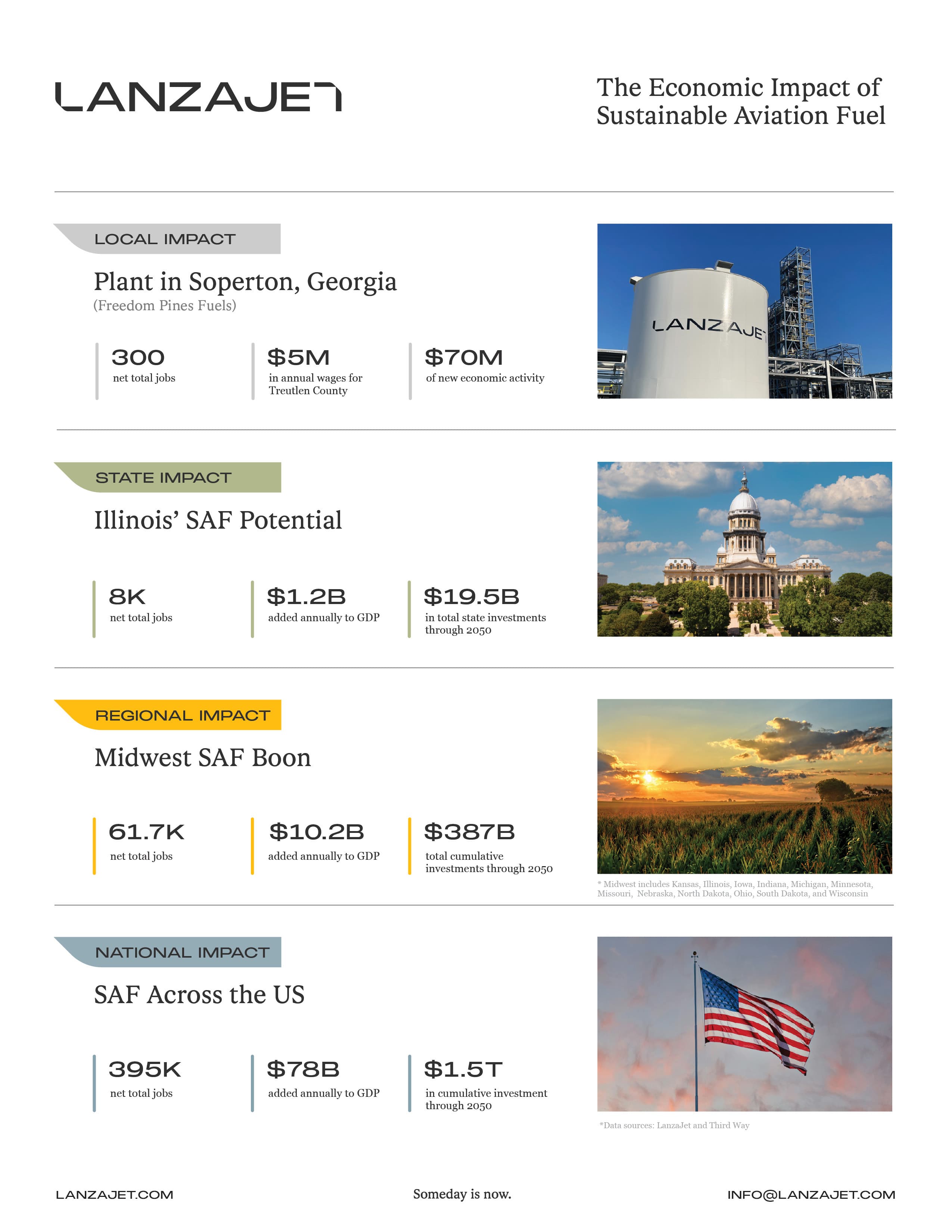How SAF Is Powering Jobs, Investment, and Economic Growth

By Angela Foster-Rice, Vice President, Government & Regulatory Affairs, LanzaJet
When we talk about sustainable aviation fuel (SAF), the conversation often starts with climate. And rightfully so. SAF is the most promising near-term solution to reduce emissions in a hard-to-abate sector. But what’s often overlooked is that SAF is also an economic opportunity, one that touches far more than just aviation.
SAF represents a chance to build new industries rooted in innovation, infrastructure, and real-world impact. From rural communities and agricultural producers to engineers, construction workers, and refinery operators, the potential economic reach of SAF is wide and meaningful. It’s not just about cleaner fuel. It’s about creating jobs, revitalizing regional economies, and building energy systems that are more diverse, resilient, and secure.
While SAF has global implications, its impact starts at the local level. And it scales. From small rural communities in the United States like Soperton, Georgia to major agricultural states like Illinois, and across entire regions like the Midwest, SAF offers a path to sustained economic growth.
To put that into perspective, we’ve captured some of the numbers in the fact sheet below. It’s a snapshot, based on data from LanzaJet and Third Way’s economic analysis, of what SAF can mean for jobs, investment, and economic opportunity – locally, regionally, and nationally.
At the local level, the numbers coming out of Soperton, Georgia, home to our LanzaJet Freedom Pines Fuels production facility, are just the beginning. A $5 million annual wage boost in a single county, 300 direct and indirect jobs, and $70 million in new economic activity all come from one plant. That’s what it looks like when clean energy development is grounded in community and designed to generate long-term value – not just environmental impact, but economic renewal.
Zooming out to the state level, the story is just as compelling. In Illinois, a strong bioeconomy and a commitment to clean energy policy could support more than 8,000 jobs and add $1.2 billion to the state’s GDP every year. That’s what’s possible with the right investment frameworks, feedstock development, and project pipelines in place. And it’s not just about aviation. SAF production is creating demand for agricultural inputs, construction services, rail and logistics networks, and industrial operations, building an ecosystem that extends well beyond the airport.
When you look across the Midwest, the heart of America’s agricultural and industrial base, the economic potential of SAF is even more pronounced. More than 60,000 jobs, $10.2 billion added annually to GDP, and nearly $400 billion in cumulative investment through 2050. These numbers reflect the role SAF can play not only in reducing aviation emissions, but in strengthening domestic supply chains, building fuel capacity, and creating long-term, skilled jobs in rural and industrial communities.
At the national level, the case for SAF is just as strong. With nearly 400,000 jobs and $78 billion added to GDP annually, SAF isn’t a niche climate solution; it’s a pillar of renewable energy and economic development strategy. Reaching that scale will take coordination across sectors and strong public-private partnerships, but the upside is clear. SAF production touches agriculture, energy, logistics, engineering, finance, and more. And with the right support, it can help reshape how we think about energy security, industrial competitiveness, and inclusive economic growth.
We’re still in the early chapters of this story, but the trajectory is already taking shape. As more countries prioritize SAF in their national strategies and more airlines commit to decarbonizing their operations, the question is no longer if this industry will scale. It’s how we ensure that scale drives economic value as much as climate value.
For years, the case for SAF has centered on the sky: fewer emissions, cleaner air, a path to decarbonizing flight. But the most overlooked part of the SAF story is what’s happening on the ground. Across the US – in farm towns, factory corridors, and fuel hubs – SAF is emerging as an unexpected economic engine. Not in theory, but in real terms: jobs, investment, and infrastructure. SAF is becoming one of the most promising industrial bets of the next generation. Policymakers cannot pass up this rare fusion of climate action and hard-hat opportunity.
